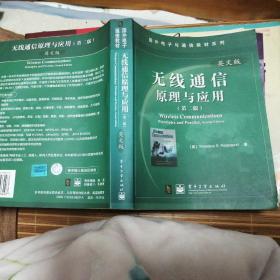
无线通信原理与应用
是英文版哟
¥ 9 1.5折 ¥ 59 八品
仅1件
四川达州
认证卖家担保交易快速发货售后保障
作者[美]拉帕波特 著
出版社电子工业出版社
出版时间2004-03
版次2
装帧平装
上书时间2019-08-06
- 在售商品 暂无
- 平均发货时间 暂无
- 好评率 暂无
- 最新上架
商品详情
- 品相描述:八品
图书标准信息
- 作者 [美]拉帕波特 著
- 出版社 电子工业出版社
- 出版时间 2004-03
- 版次 2
- ISBN 9787505396203
- 定价 59.00元
- 装帧 平装
- 开本 16开
- 纸张 胶版纸
- 页数 707页
- 字数 1025千字
- 正文语种 英语
- 【内容简介】
- 本书是一本大学无线通信课程的权威教材,面向那些已经熟悉诸如概率论、通信原理和基本电磁学等技术概念的学生和工程师。全书深入浅出地讨论了无线通信技术与系统设计方面的内容,包括无线网络涉及的所有基本问题,特别是3G系统和无线局域网的问题,并对无线网络技术新发展和全球主要的无线通信标准给出了论述。全书共分11章,集中讲述了蜂窝的概念、移动无线电传播、调制技术、多址技术以及无线系统与标准,结合理论对无线通信系统的各个方面做了精辟的论述和统计分析。全书语言生动、流畅,以详细的讲解和实际的例子来阐明重要的知识点,非常适合有一定通信理论基础的工程技术人员和在校相关专业的师生阅读。
- 【目录】
-
1IntroductiontoWirelessCommunicationSystems
1.1EvolutionofMobileRadioCommunications
1.2MobileRadiotelephonyintheU.S.
1.3MobileRadioSystemsAroundtheWorld
1.4ExamplesofWirelessCommunicationSystems
1.4.1PagingSystems
1.4.2CordlessTelephoneSystems
1.4.3CellularTelephoneSystems
1.4.3.1HowaCellularTelephoneCallisMade
1.4.4ComparisonofCommonWirelessCommunicationSystems
1.5TrendsinCellularRadioandPersonalCommunications
1.6Problems
2ModernWirelessCommunicationSystems
2.1SecondGeneration(2G)CellularNetworks
2.1.1Evolutionto2.5GWirelessNetworks
2.1.2Evolutionfor2.5GTDMAStandards
2.1.2.1HSCSDfor2.5GGSM
2.1.2.2GPRSfor2.5GGSMandIS-136
2.1.2.3EDGEfor2.5GGSMandIS-136
2.1.3IS-95Bfor2.5GCDMA
2.2ThirdGeneration(3G)WirelessNetworks
2.2.13GW-CDMA(UMTS)
2.2.23Gcdma2000
2.2.33GTD-SCDMA
2.3WirelessLocalLoop(WLL)andLMDS
2.4WirelessLocalAreaNetworks(WLANs)
2.5BluetoothandPersonalAreaNetworks(PANs)
2.6Summary
2.7Problems
3TheCellularConcept——SystemDesignFundamentals
3.1Introduction
3.2FrequencyReuse
3.3ChannelAssignmentStrategies
3.4HandoffStrategies
3.4.1PrioritizingHandoffs
3.4.2PracticalHandoffConsiderations
3.5InterferenceandSystemCapacity
3.5.1Co-channelInterferenceandSystemCapacity
3.5.2ChannelPlanningforWirelessSystems
3.5.3AdjacentChannelInterference
3.5.4PowerControlforReducingInterference
3.6TrunkingandGradeofService
3.7ImprovingCoverage&CapacityinCellularSystems
3.7.1CellSplitting
3.7.2Sectoring
3.7.3RepeatersforRangeExtension
3.7.4AMicrocellZoneConcept
3.8Summary
3.9Problems
4MobileRadioPropagation:Large-ScalePathLoss
4.1IntroductiontoRadioWavePropagation
4.2FreeSpacePropagationModel
4.3RelatingPowertoElectricField
4.4TheThreeBasicPropagationMechanisms
4.5Reflection
4.5.1ReflectionfromDielectrics
4.5.2BrewsterAngle
4.5.3ReflectionfromPerfectConductors
4.6GroundReflection(Two-Ray)Model
4.7Diffraction
4.7.1FresnelZoneGeometry
4.7.2Knife-edgeDiffractionModel
4.7.3MultipleKnife-edgeDiffraction
4.8Scattering
4.8.1RadarCrossSectionModel4.9PracticalLinkBudgetDesignUsingPathLossModels
4.9.1Log-distancePathLossModel
4.9.2Log-normalShadowing
4.9.3DeterminationofPercentageofCoverageArea
4.10OutdoorPropagationModels
4.10.1Longley-RiceModel
4.10.2DurkinsModel——ACaseStudy
4.10.3OkumuraModel
4.10.4HataModel
4.10.5PCSExtensiontoHataModel
4.10.6WalfischandBertoniModel
4.10.7WidebandPCSMicrocellModel4.11IndoorPropagationModels
4.11.1PartitionLosses(samefloor)
4.11.2PartitionLossesbetweenFloors
4.11.3Log-distancePathLossModel
4.11.4EricssonMultipleBreakpointModel
4.11.5AttenuationFactorModel
4.12SignalPenetrationintoBuildings
4.13RayTracingandSiteSpecificModeling
4.14Problems
5MobileRadioPropagation:Small-ScaleFadingandMultipath
5.1Small-ScaleMultipathPropagation
5.1.1FactorsInfluencingSmall-ScaleFading
5.1.2DopplerShift
5.2ImpulseResponseModelofaMultipathChannel
5.2.1RelationshipBetweenBandwidthandReceivedPower
5.3Small-ScaleMultipathMeasurements
5.3.1DirectRFPulseSystem
5.3.2SpreadSpectrumSlidingCorrelatorChannelSounding
5.3.3FrequencyDomainChannelSounding
5.4ParametersofMobileMultipathChannels
5.4.1TimeDispersionParameters
5.4.2CoherenceBandwidth
5.4.3DopplerSpreadandCoherenceTime
5.5TypesofSmall-ScaleFading
5.5.1FadingEffectsDuetoMultipathTimeDelaySpread
5.5.1.1Flatfading
5.5.1.2FrequencySelectiveFading
5.5.2FadingEffectsDuetoDopplerSpread
5.5.2.1FastFading
5.5.2.2SlowFading
5.6RayleighandRiceanDistributions
5.6.1RayleighFadingDistribution
5.6.2RiceanFadingDistribution
5.7StatisticalModelsforMultipathFadingChannels
5.7.1ClarkesModelforFlatFading
5.7.1.1SpectralShapeDuetoDopplerSpreadinClarkesModel
5.7.2SimulationofClarkeandGansFadingModel
5.7.3LevelCrossingandFadingStatistics
5.7.4Two-rayRayleighFadingModel
5.7.5SalehandValenzuelaIndoorStatisticalModel
5.7.6SIRCIMandSMRCIMIndoorandOutdoorStatisticalModels
5.8TheoryofMultipathShapeFactorsforSmall-ScaleFadingWirelessChannels
5.8.1IntroductiontoShapeFactors
5.8.1.1MultipathShapeFactors
AngularSpread,A
AngularConstriction,γ
AzimuthalDirectionofMaximumFading,θmax
5.8.1.2FadingRateVarianceRelationships
ComplexReceivedVoltage,V(r)
ReceivedPower,P(r)
ReceivedEnvelope,R(r)
5.8.1.3ComparisontoOmnidirectionalPropagation
5.8.2ExamplesofFadingBehavior
5.8.2.1SectorChannelModel
5.8.2.2DoubleSectorChannelModel
5.8.2.3RiceanChannelModel
5.8.3Second-OrderStatisticsUsingShapeFactors
5.8.3.1Level-CrossingRatesandAverageFadeDuration
5.8.3.2SpatialAutocovariance
5.8.3.3CoherenceDistance
5.8.4ApplyingShapeFactorstoWidebandChannels
5.8.5RevisitingClassicalChannelModelswithShapeFactors
5.9Summary
5.10Problems
6ModulationTechniquesforMobileRadio
7Equalization,Diversity,andChannelCoding
8SpeechCoding
9MultipleAccessTechniquesforWirelessCommunications
10WirelessNetworking
11WirelessSystemsandStandards
Appendices
Index
点击展开
点击收起
相关推荐
— 没有更多了 —


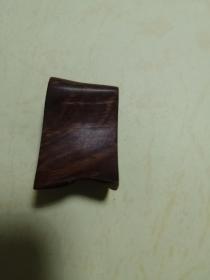
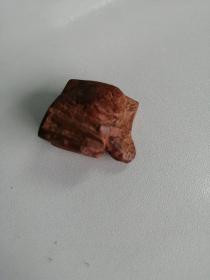


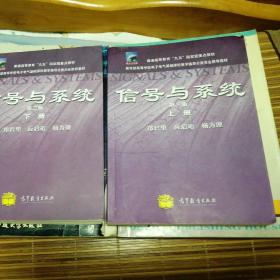

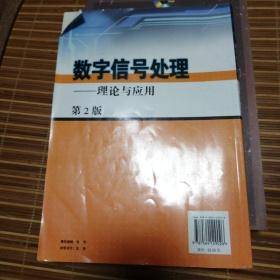







以下为对购买帮助不大的评价